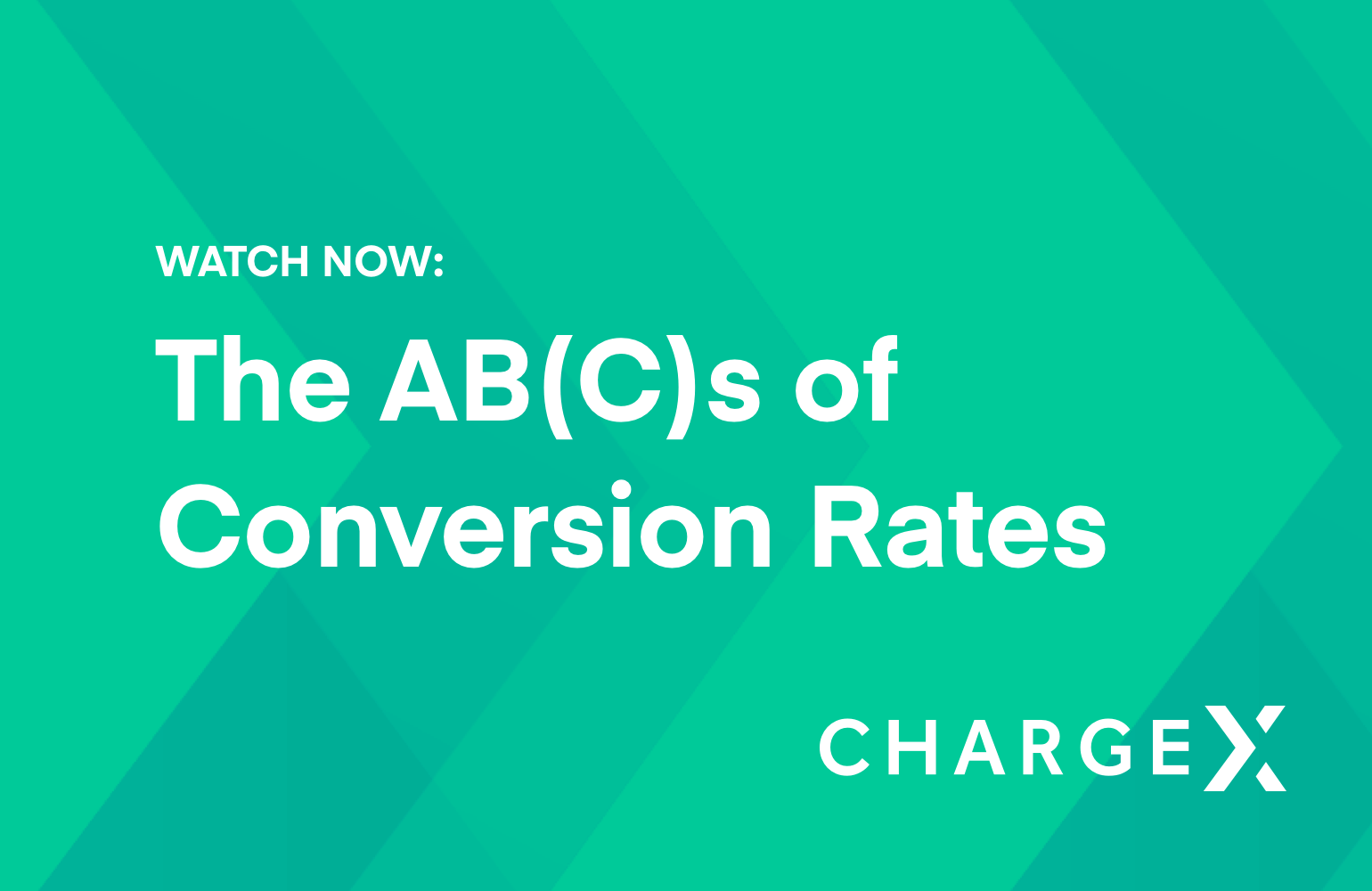Conversion rate optimization
Get started with RechargeWhat is conversion rate optimization (CRO)?
Conversion rate optimization (CRO) is the process of improving your website and content to increase conversion, or the percentage of users who complete a desired action. Conversion actions can include clicking a link on your landing page, downloading a file, filling out a form, purchasing a product, and more.
CRO does not necessarily mean trying to increase web traffic for your site; rather, it involves designing your website experience so your existing visitors behave in a certain way.
How do I calculate my website’s conversion rate?
To calculate your conversion rate percentage from the website, divide your total conversions by your total website visitors and multiply by 100. Average conversion rate can also be calculated with the number of visitor sessions instead.
The key components of CRO are:
1. Conversion rate
The conversion rate is the percentage of website visitors who complete a desired action out of the total number of visitors. It is a crucial metric for evaluating the effectiveness of a website or marketing campaign in driving user engagement and achieving business objectives.
2. Website visitors
Website visitors are individuals who access a website through various channels, such as organic search, paid advertising, social media, or direct traffic. Understanding the behavior and preferences of website visitors is essential for your conversion rate optimization strategy and improving overall user experience.
What are the benefits of CRO?
Depending on how your business defines conversions, CRO can have enormous benefits: for everything from generating revenue to increasing average order value and customer lifetime value, to increasing MRR and/or ARR for subscription model businesses.
Increased revenue: By improving conversion rate, businesses can generate more sales and revenue from their existing website traffic. A higher conversion rate means a higher percentage of visitors are taking desired actions, resulting in a positive impact on the bottom line.
Enhanced user experience: Conversion rate optimization involves optimizing various elements of a website, such as design, navigation, and content, to provide a seamless and engaging user experience. This leads to higher satisfaction among website visitors and encourages repeat visits and conversions. Conversion optimization improves the user experience, boosting customer loyalty and trust in your brand. It also allows for a deeper understanding of your potential customers and the design features, copy styles, and CTAs they find the most compelling.
Cost-effectiveness: CRO focuses on maximizing the value of existing website traffic, making it a cost-effective strategy compared to acquiring new traffic through paid advertising or other marketing channels. By converting a higher percentage of existing visitors, businesses can achieve better returns on their marketing investments.
How do I optimize conversion rate for my site?
Because conversion optimization depends on your individual business, customers, and conversion goal, the most effective technique in the conversion rate optimization process is to learn more about your site visitors and target audience.
Collect the data
Conduct user research: Gain insights into the needs, preferences, and behavior of your target audience through surveys, user interviews, and analytics data. Understanding your audience’s motivations and pain points is crucial for optimizing conversion rates.
Collect information and conduct analysis of things like what draws users to your site, what makes them leave, where on your site they spend most of their time, and what channels, devices, and browsers they use.
A/B testing: You can conduct A/B testing to identify the design features, copy styles, and CTAs they find most compelling. Test different variations of key elements such as headlines, CTA buttons, imagery, and page layouts to identify which combinations yield the highest conversion rates.
A/B testing allows you to make data-driven decisions and continuously optimize your website for better performance.
Make the changes
Optimize landing pages: Design and optimize landing pages with clear and compelling calls-to-action (CTAs), relevant content, and intuitive navigation. A well-designed landing page can significantly impact numbers by guiding visitors towards desired actions.
Improve website speed and performance: Ensure that your website loads quickly and performs smoothly across all devices. Slow-loading pages and technical glitches can negatively impact user experience and deter visitors from completing desired actions.
Personalize content: Leverage data-driven personalization techniques to deliver relevant content, product recommendations, and offers to individual users based on their preferences and behavior. Personalized experiences can increase engagement and drive higher conversion rates.
Relevant articles

ChargeX: The AB(C)s of conversion rates
Lacey Grubb October 30, 2019 Oct 30, 2019

How to reach your next subscriber milestone
Katrina Nguyen August 1, 2024 Aug 1, 2024

